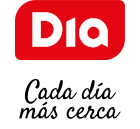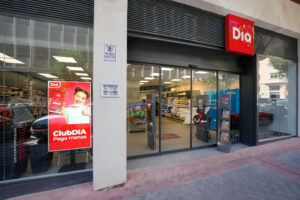In H1, Dia Group posted gross sales under banner of EUR4.6bn, up by 1.4%
July 26, 2018
The DIA group posted gross sales under banner of EUR4.6bn in the first months of the year, implying a 1.4% increase in local currency compared to the same period in the previous year.
Comparable sales in Spain rose by 0.3% and by 1.8% at group level. In the first half of the year, 903 stores were remodelled, of which 860 in Spain. The Dia Group keeps the level of remodelling at 1,090 stores for all of 2018.
In Spain, online sales from January to June reached EUR39m, implying a 48% increase. “We have almost completed our ambitious remodelling plan for the year, with more than 900 stores already upgraded in Iberia with good results. We are starting to observe the impact of these transformations in the very positive sales trend in July and we expect to sustain this positive pattern in the second half of the year, when we also plan to open new DIA, La Plaza and Clarel stores.
Argentina experienced big currency depreciation in Q2 2018. In this environment, our business is getting stronger by the day, gaining market share and growing operational profit.
In Brazil, the good sales performance seen since March continued until the transport strike massively
impacted our operations. DIA’s lean supply chain and geographical concentration was hit hard, with very high out of stocks in May and June, leading to a significant negative impact on sales and profitability in the quarter. Since July, business has returned to normal. The new strategy plan that was announced at the AGM is being completed and will be presented to the market in October”, declared Ricardo Currás, Dia Group CEO.
Adjusted EBITDA reached EUR225.8m, down by 14.6%, and underlying net profit fell by 44% to EUR66.1m. The company has decided to discontinue its Max Descuento cash & carry activity, which has 35 stores in Spain. As of the end of June 2018, the Dia Group had a network of 7,409 stores.
GLOSSARY
● Gross sales under banner: Total turnover value obtained in stores, including indirect taxes (sales receipt value) in all the company’s stores, both owned and franchised.
● LFL sales growth under banner: Growth rate of gross sales under banner at constant currency of the stores that have been operating for more than thirteen months under the same business conditions.
● Other items excluded from adjusted EBIT: Volume of costs and revenues the company isolates in the management accounts to gain a better understanding of the underlying performance of the core business during the period. Items usually excluded from adjusted EBIT are classified between “Other cash items” (Expenses relating to acquisitions, expenses for restructuring and efficiency projects, expenses relate to the transfer of own stores to franchises, and gains on disposal of assets), “Expenses related to share-based payments transactions” and “Other non-cash items” (Losses on write-down of fixed assets, impairment of fixed assets and amortization related to the closing of stores).
● Adjusted EBITDA: Operating profit after adding back depreciation and amortization (including amortization related to the closing of stores and impairment of fixed assets), losses on write down of fixed assets, “Other cash items” and “Expenses related to share-based payments transactions”.
● Adjusted EBIT: Operating profit after adding back “Other cash items”, “Expenses related to share-based payments transactions” and “Other non-cash items”.
● Underlying net profit: Net income calculated on net profit attributable to the parent company, adjusted by “Other items excluded from adjusted EBIT”, “Items excluded from financial income and expenses”, “Items excluded from income tax” and “Losses net of taxes of discontinued operations”.
● Basic EPS: Fraction of the company’s profit calculated as net attributable profit divided by the weighted average number of shares.
● Underlying EPS: Fraction of the company’s profit calculated as underlying net profit divided by the weighted average number of shares.
● Net financial debt: Overall financial situation of the company that results by subtracting the total value of company’s short-term, long-term financial debt, other financial liabilities from the total value of its cash, cash equivalents, and other liquid assets. All the information necessary to calculate the company’s net debtis included in the balance sheet.
● Cash from operations: Adjusted EBITDA less “Other cash items”, less Capex excluding acquisitions. This internally calculated cash flow measure is included as one of the key financial metrics of the long-term incentive plan for the company’s top management.






